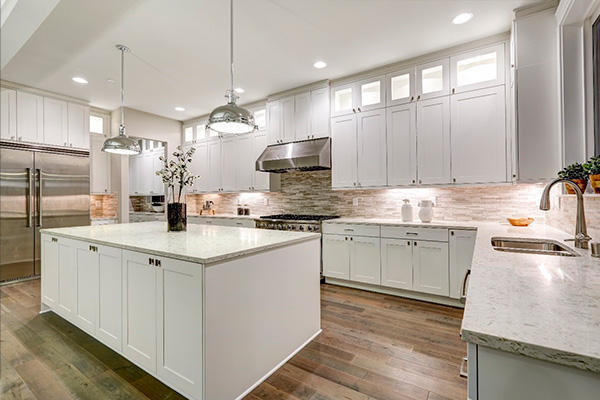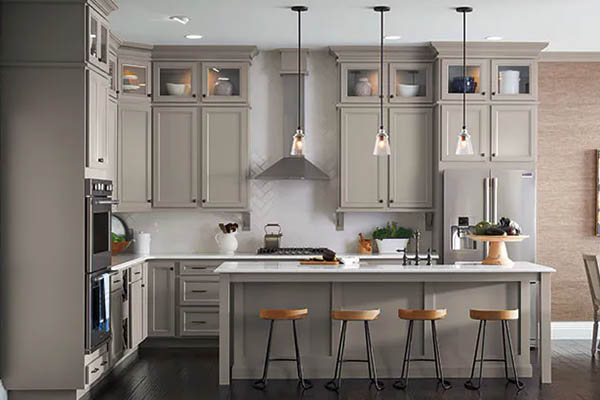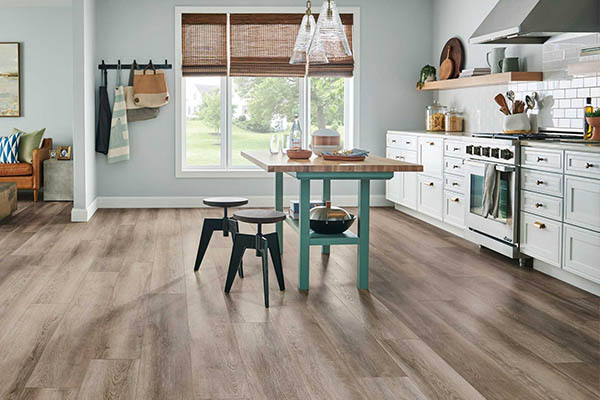Tips & Tricks To Fix Peeling Thermofoil Cabinets
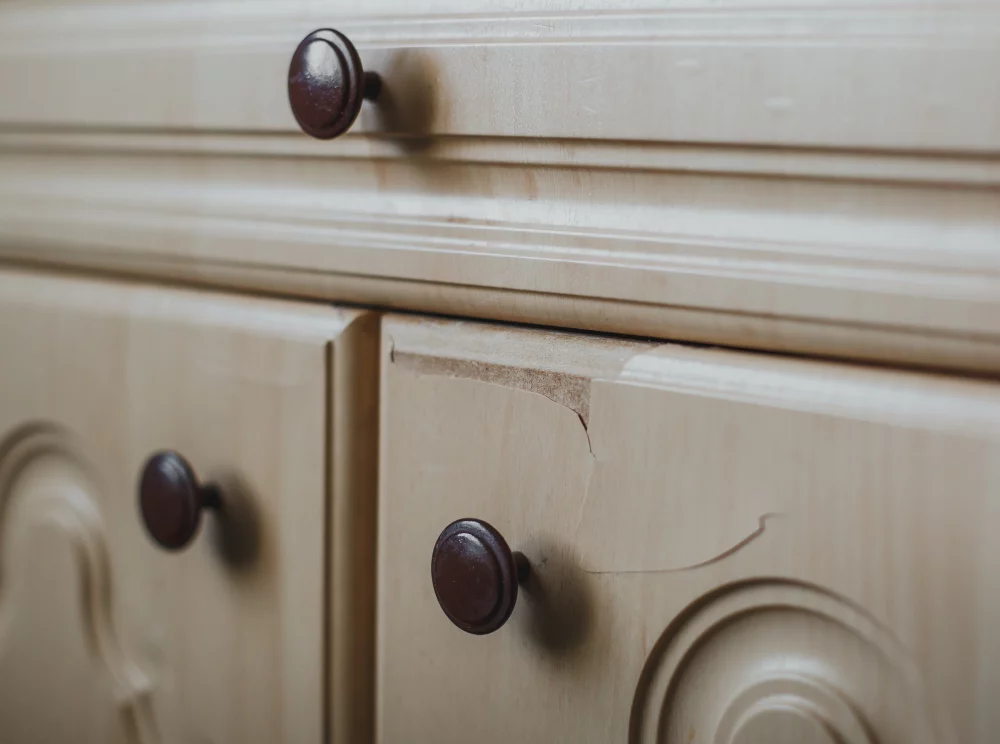
Thermofoil cabinets are a popular choice for kitchens. Their affordability, easy maintenance, trendy look, and variety in design and color make them a favorite for many homes. However, the incredible features of these kitchen cabinets come with a cost: the tendency to peel and delaminate over time.
Instead of simply accepting the problem as a part of your kitchen or opting for the more expensive route of entirely replacing the cabinets, implementing a few super-simple tips and tricks for repairing worn-out thermofoil cabinets is a solution you’ll thank us for. So grab your toolbox and wear your safety glasses as we go on to discover the various ways that will give your tired thermofoil kitchen cabinets an instant refresh!
Step-by-Step Guide To Fix Thermofoil Peeling
Since thermofoil is a thinner material compared to laminate veneer or wood veneer, it is prone to much quicker delamination. Excessive moisture and heat cause the core MDF to swell, eventually leading to bubbling, cracking, and peeling on the thermofoil finish.
The good news is that you can repair the original look without paying the hefty price of a full-fledged cabinet remodel. In this guide, we will discuss how to stick the old piece of thermofoil back.
Supplies To Have On Hand
- Woodworker’s clamps
- Disposable brush
- Putty knife
- Scrap soft materials, like rags, carpeting, etc.
- Short pieces (preferably 1x4) of scrap wood
- Contact cement
Factors To Take Into Consideration
Since the process involves the use of contact cement, having good ventilation is the first step to creating a safe work environment. Turn on the kitchen exhaust fan, open the windows, use the ceiling fan, or bring in a few pedestal fans to enhance the air exchange. Don’t forget to wear gloves, safety goggles, and a mask or respirator to protect your eyes, skin, and lungs.
For further precaution, you can remove the cabinet door and repair it in your garage or balcony to avoid the accumulation of concentrated harmful vapors.
Without further ado, let’s dive into the step-by-step process of fixing peeling thermofoil cabinets!
Step 1 - Peel Away The Old Thermofoil and Scrap Residual Adhesives
Pull back the thermofoil from the MDF. We recommend getting assistance from a friend for this step. Also, make sure not to go too far, as old thermofoil can easily crack.
Next, lift the peeling edge carefully. Use a corner of sandpaper to scrape off any residual adhesives (such as cement or glue from previous repairs) on the MDF. Even if there haven’t been any repairs before, the MDF might still have surface imperfections that need to be smoothed out with scraping.
Step 2 - Apply Adhesive Material
While keeping the thermofoil separated from the MDF, start applying contact cement to both the inner side of the thermofoil and the exposed top surface of the MDF with a disposable brush. Make sure to spread out the cement all the way to the edges of both surfaces to avoid future peeling.
Step 3 - Once Dried, Press & Secure The Materials
While it may be tempting to join the surfaces when wet, you must wait till the cement is dry to touch. The instructions on the cement you’ve used will indicate how long to wait. Commonly, this timespan will be around 15 minutes.
Once the cement is dry, press together the surfaces and hold them in place for about an hour. To keep the work in a firm position, sandwich the thermofoil between two pieces of scrap board held with the woodworker’s clamps.
Step 4 - Clean Up
Pill up the dried excess contact cement by gently rubbing it with your fingers. A pencil eraser can also do the job.
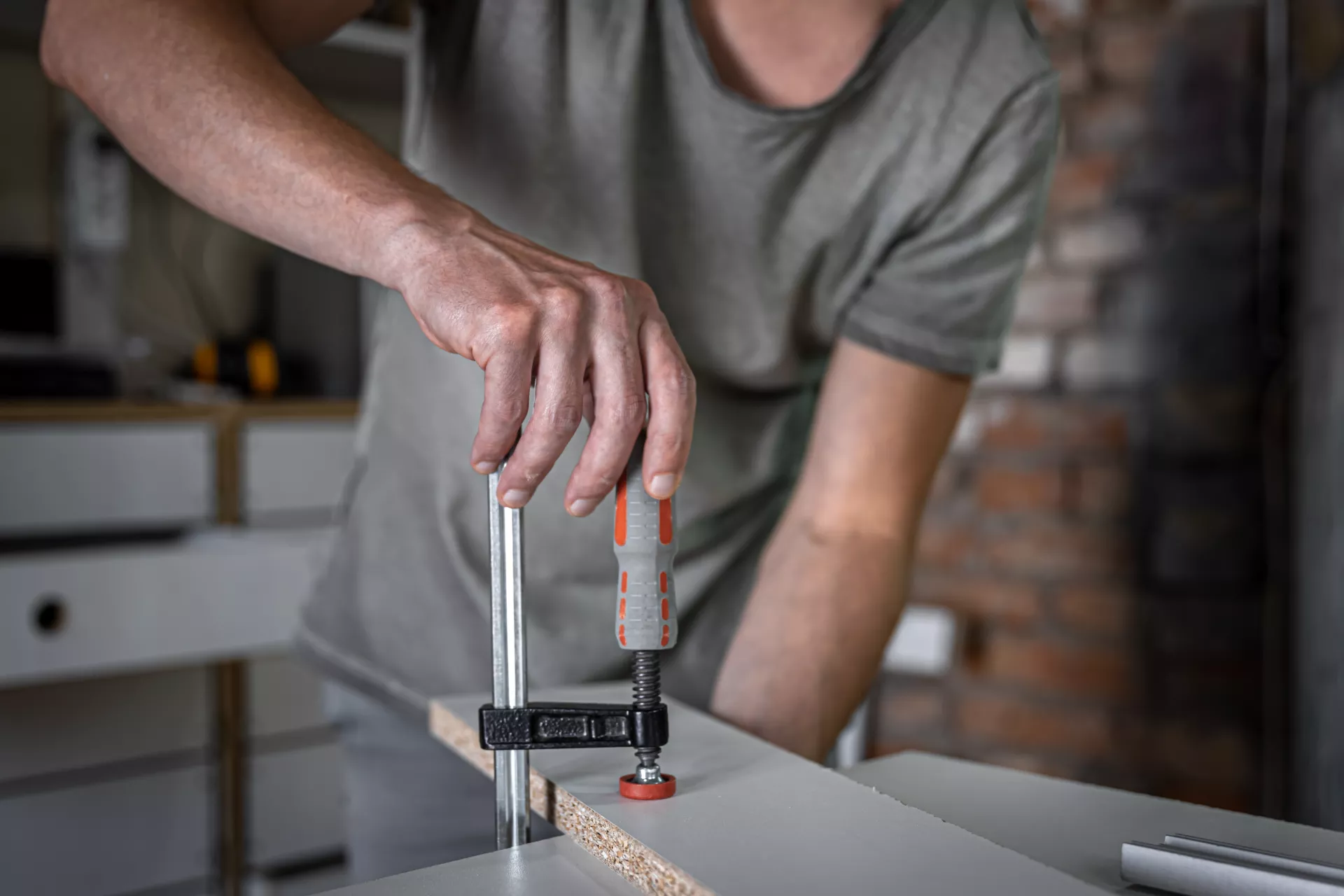
Maintaining Thermofoil Kitchen Cabinets
If properly maintained, thermofoil kitchen cabinets will last up to 15 years! Unlike natural wood, thermofoil cabinets are made to resist warping, scratching, and damage, freeing you from the expensive costs of replacing the entire cabinetry every 5 years or so.
Here is a list of a few practices you can implement to keep your kitchen cabinets looking fresh and new.
- Clean up regularly - Gently wipe all surfaces with a soft cloth and a mild solution of water and soap. Avoid pressure and scrubbing, as this can scratch the surface. 10 to 20 gentle strokes will be enough.
- Wipe stains immediately - Kitchen cabinets are prone to stains of oil, soapy water, food splatters, etc. To clean thermofoil cabinets, make sure to use gentle household cleaners without abrasives. Other options include diluted dawn dish soap and diluted rubbing alcohol. Avoid spraying the product directly onto the cabinets, and always test on a non-visual location before proceeding with the entire cabinetry.
- Create heat protection with a barrier - Installing heat shields (metal strips between the heat source and cabinets) can protect thermofoil cabinetry for longer.
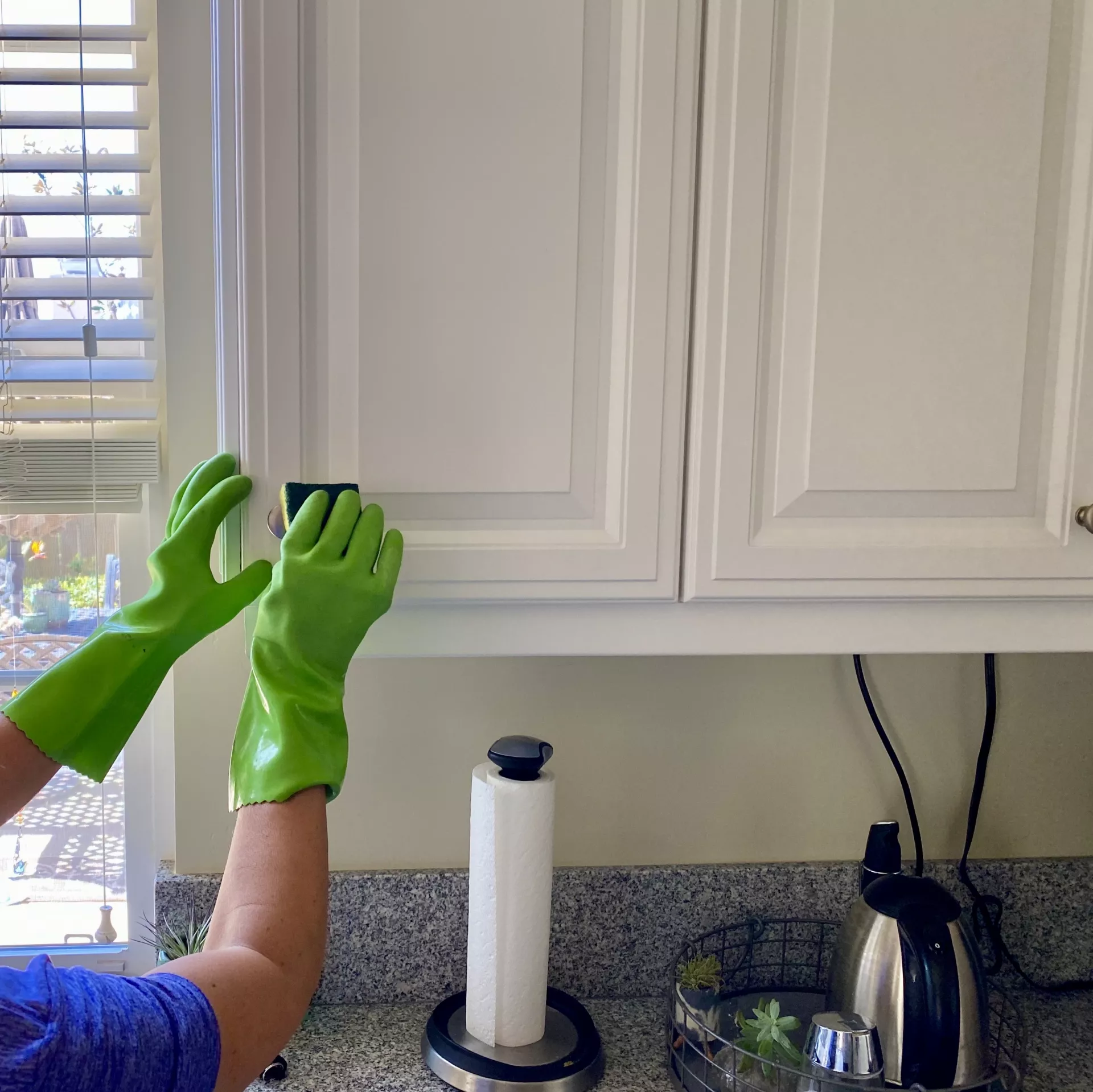
Other vital tips to remember:
- Wipe with a lint-free cloth.
- Do not use a dishcloth for wiping, as it might contain ingredients and grease.
- Stay away from solvent-based cleaners, toilet bowl cleaners, or any other solutions containing baking soda or ammonia.
- Avoid waxing thermofoil cabinetry.
- Use blinds and curtains to avoid direct UV rays from falling on the cabinetry.
FAQs
Now that you’re familiar with how to fix peeling thermofoil cabinets, it’s time to move on to some frequently asked questions to make sure the process is done 100% correctly. After all, kitchen cabinets are an expensive investment that must be handled with utmost care and perfection.
Can I Use A New Piece Of Thermofoil In Damaged Areas?
There are several problems with this approach. The original thermofoil was fixed under pressure with very high temperatures, conditions that cannot be replicated. Gluing the piece of new thermofoil-like material over the damaged areas will result in visible ‘fractures’ on the boundaries of the new piece you attach. So, we recommend sticking back your old piece of thermofoil (if it has simply peeled back and not cracked).
If your cabinets are too damaged, consider completely removing the foil and painting the MDF instead. However, this must be done on all the facades to maintain consistency.
Should I Repair Or Replace Peeling Thermofoil Cabinets?
If the peeling is visible only on one or two cabinets or on locations frequently exposed to moisture and heat, repairing would be the right choice. Additionally, if the peeled strips are large torn-off pieces, repairing would be much easier than when multiple narrow strips are peeling back.
On the other hand, if the MDF is bulging or isn’t completely smooth and flat, repairing would be useless as warped MDF cannot be smoothed or sanded down.
How Can I Avoid Thermofoil Peeling In The Future?
Heat, moisture, or a combo of both weakens the bond between the MDF core and the thin thermofoil peeling. The most common delamination areas for thermofoil kitchen cabinets are the surfaces located beneath appliances like toasters, coffee makers, ovens, etc. Therefore, pulling all such portable heat-generating devices away from the cabinets when using them can help slow down the delamination process — if not fully avoid it. Additionally, when using the stove or oven, don’t forget to switch on the overhead fan to prevent steam buildup.
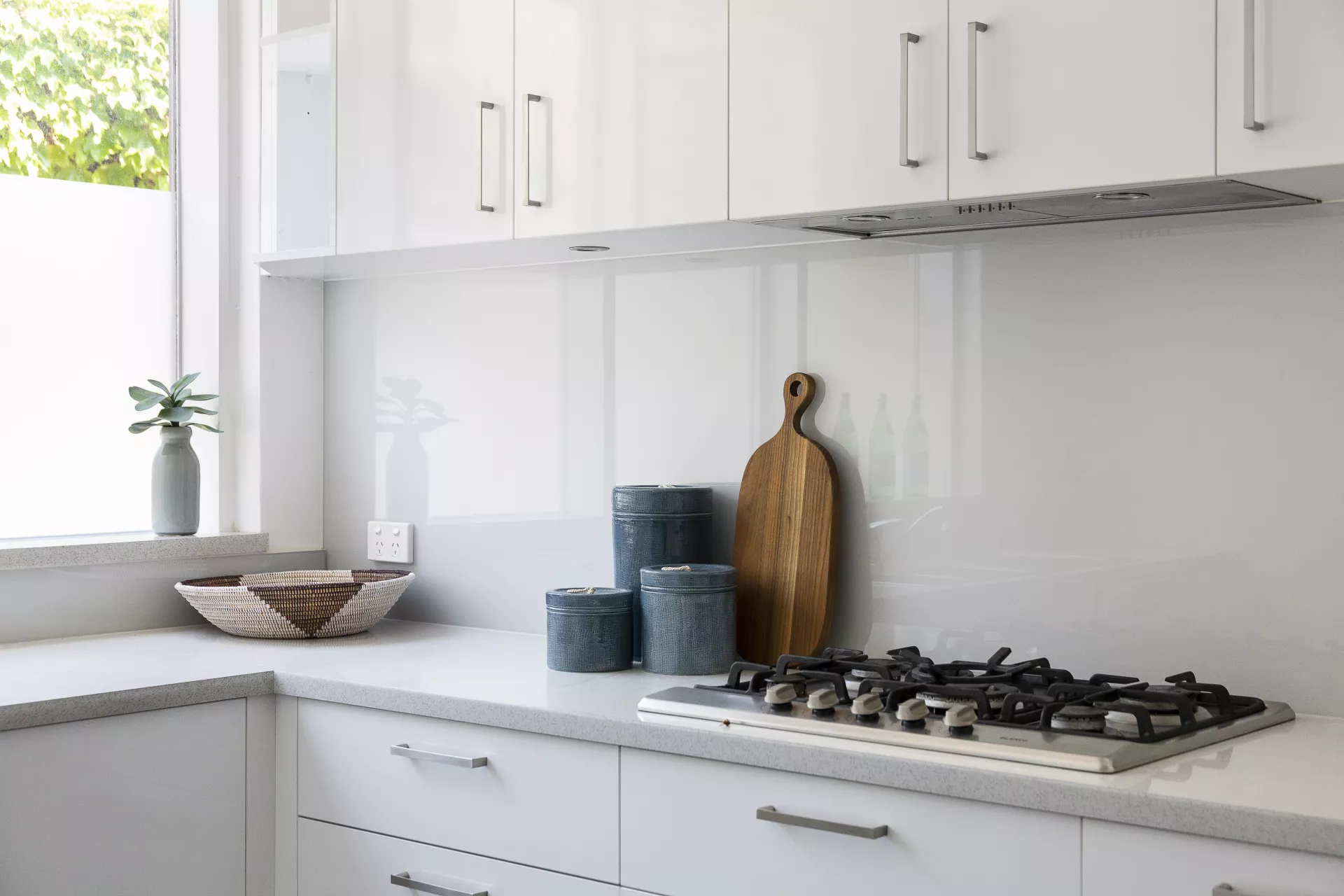
Conclusion
As long as you’ve been cleaning and maintaining the kitchen cabinets properly, repairing or staining every few years is a quick, effective, and affordable solution to keep your thermofoil cabinetry in good condition. If the thermofoil hasn’t started peeling over yet, simply giving it a fresh lick of paint will do the trick.
Still unsure of where and how to start? Contact us now or ring up one of your local contractors for further assistance!
Find more articles about kitchen remodeling in the KITCHEN section of the KBF BLOG.

